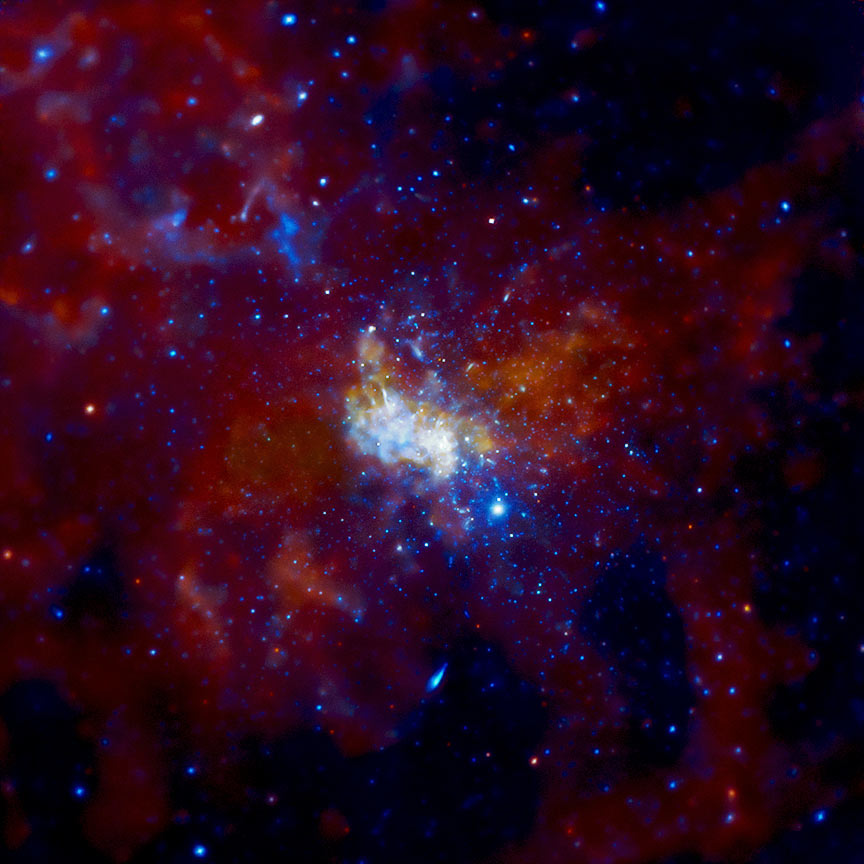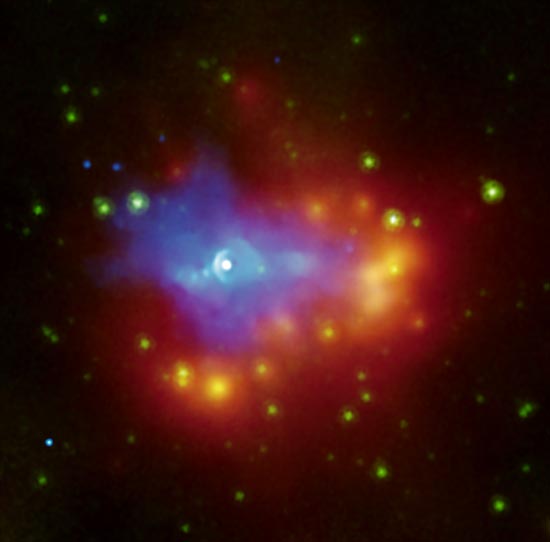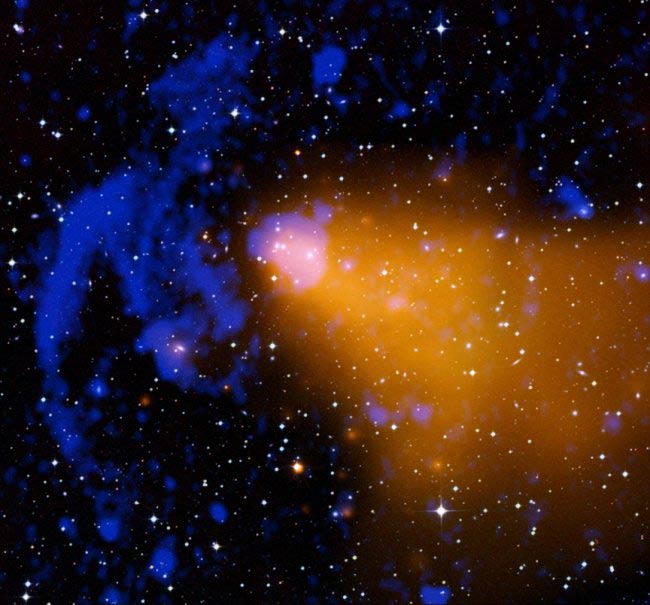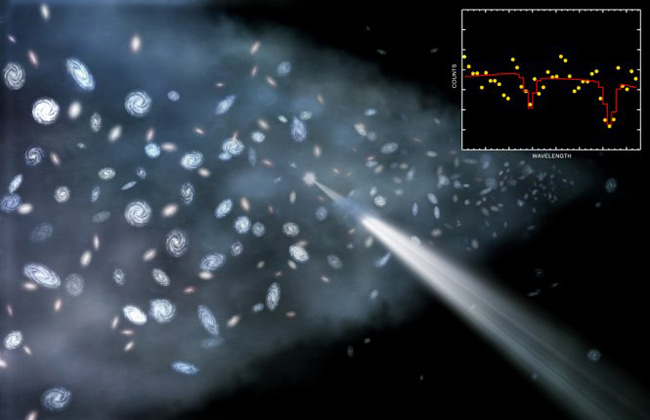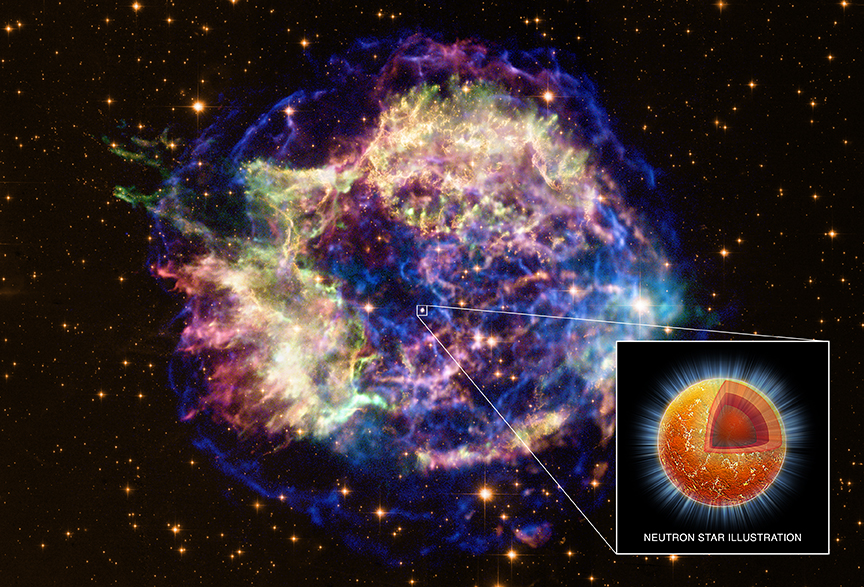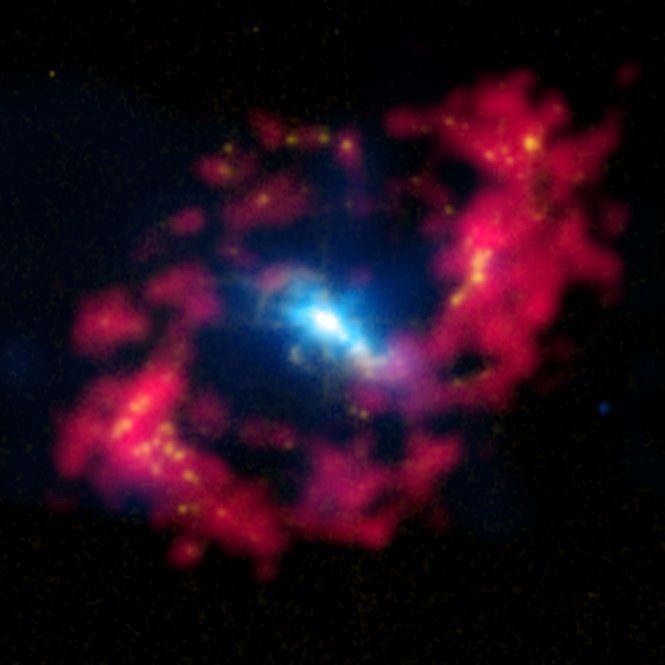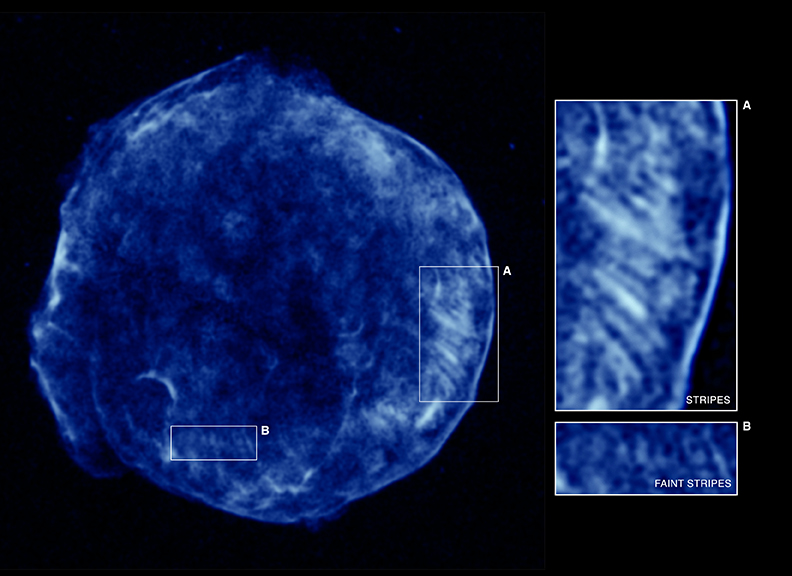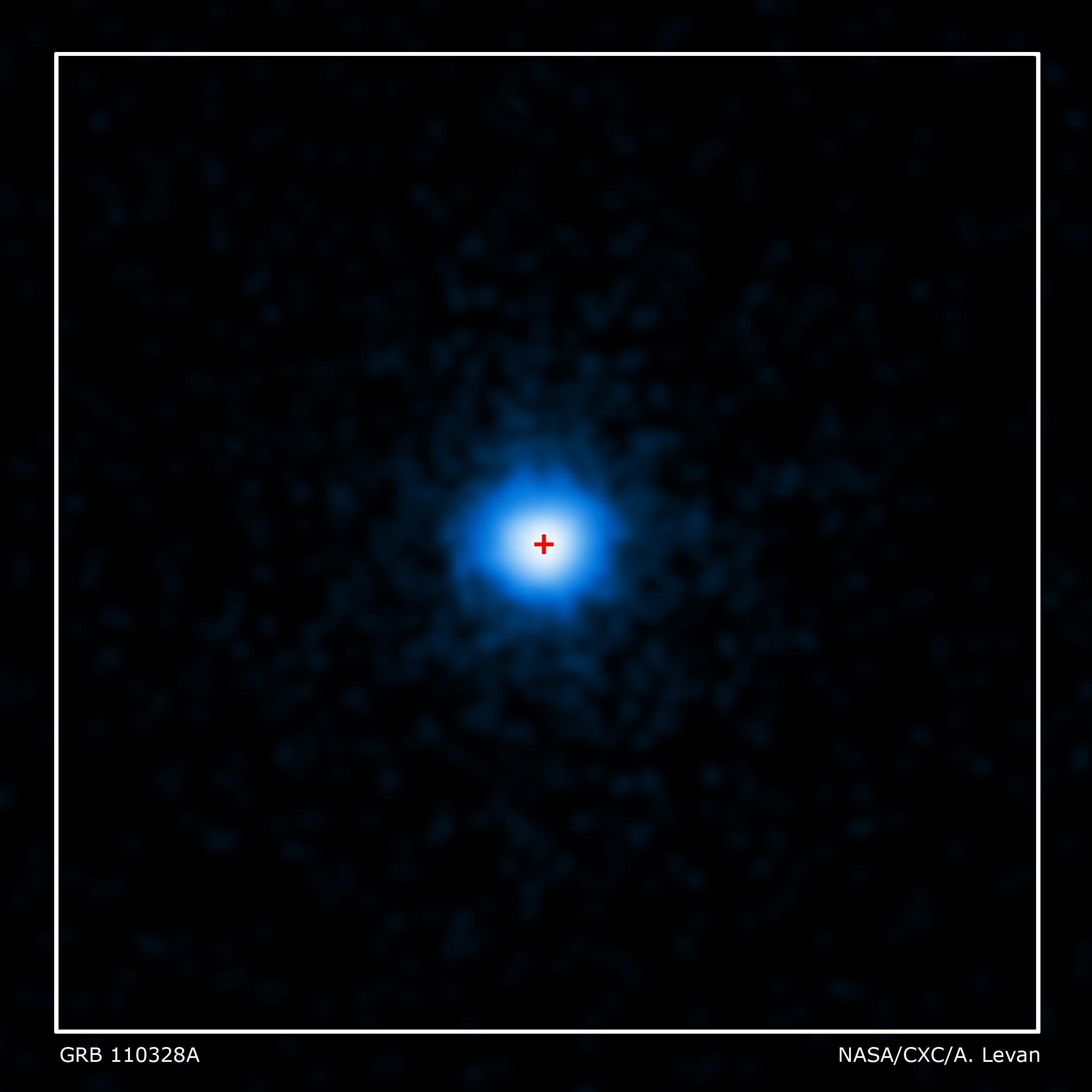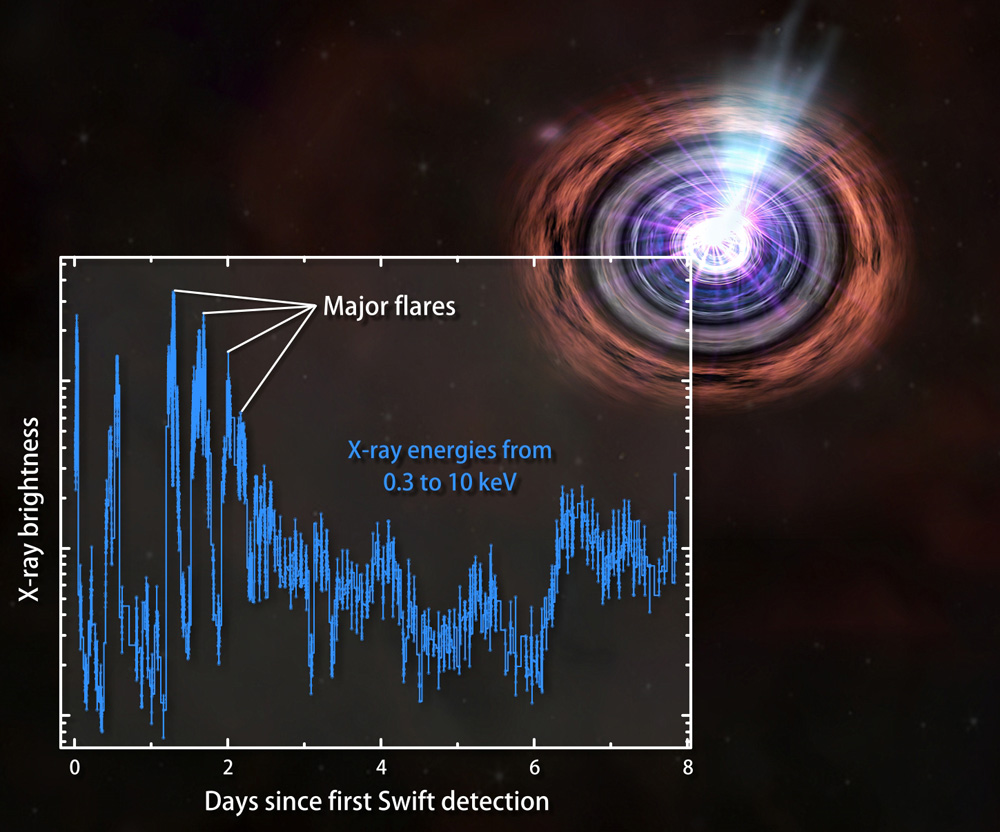Our X-Ray Universe: Amazing Photos by NASA's Chandra X-Ray Observatory
Black Hole's Mysterious Eating Disorder Solved
This Chandra X-Ray Observatory image of the Milky Way's central black hole Sagittarius A* and the surrounding region is based on data from a series of observations lasting a total of about one million seconds, or almost two weeks, in May 2009 and Sept. 1999. It was released Jan. 5, 2009 and helps researchers understand why the black hole eats less material than expected.
Star's Corpse Illuminated by High-Energy Wind
A new image from NASA's Chandra X-ray Observatory and Spitzer Space Telescope shows the dusty remains of a collapsed star. The composite image of G54.1+0.3 shows X-rays from Chandra in blue, and data from Spitzer in green (shorter wavelength infrared) and red-yellow (longer wavelength infrared). Scientists think that a pulsar (the white source in the center) is sending off a wind that is heating up remnant supernova dust.
Einstein (Still) Rules The Universe
This composite image of the galaxy cluster Abell 3376 shows X-ray data from the Chandra X-ray Observatory and the ROSAT telescope in gold, an optical image from the Digitized Sky Survey in red, green and blue, and a radio image from the VLA in blue.
Two Black Holes Found Hard to Kill
This composite image of the nearby galaxy M82 shows Chandra X-ray Observatory data in blue, optical data from the Hubble Space Telescope in green and orange, and infrared data from the Spitzer Space Telescope in red. The pullout is a Chandra image that shows the central region of the galaxy that contains two bright X-ray sources thought to be mid-sized black holes.
Huge Chunk of Universe's Missing Matter Found
Scientists have used NASA's Chandra X-ray Observatory and ESA's XMM- Newton to detect a vast reservoir of gas lying along a wall-shaped structure of galaxies about 400 million light years from Earth. In this artist's impression, a close-up view of the so-called Sculptor Wall is depicted. This discovery is the strongest evidence yet that the "missing matter" in the nearby Universe is located in an enormous web of hot, diffuse gas.
Supernova remnant Casseopeia A Neutron Star
This image presents a composite of X-rays from Chandra (red, green, and blue) and optical data from Hubble (gold) of Cassiopeia A, the remains of a massive star that exploded in a supernova. Inset: A cutout of the interior of the neutron star, where densities increase from the crust (orange) to the core (red) and finally to the region where the "superfluid" exists (inner red ball).
Black hole structure looks like Eye of Sauron
The supermassive black hole at the center of the spiral galaxy NGC 4151 has created a structure that astronomers call the "Eye of Sauron," after the evil wizard in J.R.R. Tolkien's "Lord of the Rings" novels. This image is a composite of images taken by several different telescopes.
Breaking space news, the latest updates on rocket launches, skywatching events and more!
X-rays Tycho Supernova Remnant
This Chandra image shows the higher energy X-rays detected from the Tycho supernova remnant. These X-rays show the expanding blast wave from the supernova, a shell of extremely energetic electrons. Close-ups of two different regions are shown, region A containing the brightest stripes of tangled magnetic fields and region B with fainter stripes.
Four-hour Chandra exposure of GRB 110328A on April 4
NASA's Chandra X-ray Observatory completed this four-hour exposure of GRB 110328A on April 4. The center of the X-ray source corresponds to the very center of the host galaxy imaged by Hubble (red cross).
Repeated X-ray flares of explosion GRB 110328A
GRB 110328A has repeatedly flared in the days following its discovery by Swift. This plot shows the brightness changes recorded by Swift's X-ray Telescope.

Space.com is the premier source of space exploration, innovation and astronomy news, chronicling (and celebrating) humanity's ongoing expansion across the final frontier. Originally founded in 1999, Space.com is, and always has been, the passion of writers and editors who are space fans and also trained journalists. Our current news team consists of Editor-in-Chief Tariq Malik; Editor Hanneke Weitering, Senior Space Writer Mike Wall; Senior Writer Meghan Bartels; Senior Writer Chelsea Gohd, Senior Writer Tereza Pultarova and Staff Writer Alexander Cox, focusing on e-commerce. Senior Producer Steve Spaleta oversees our space videos, with Diana Whitcroft as our Social Media Editor.
